| Date | Text | |
|---|---|---|
30 Nov 1989
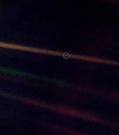
Pale Blue Dot |
Pale Blue Dot (astronomy and space ) The Pale Blue Dot photograph of Earth is sent back from the Voyager 1 probe after completing its primary mission, from around 3.5 billion miles away. |
|
30 Nov 1989
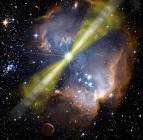
Gamma ray burst |
Gamma ray burst (astronomy and space ) Gamma ray burst GRB 090423 is detected, coming from the most distant known astronomical object of any kind at this time. |
|
30 Nov 1989
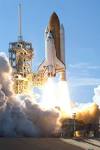
Space Shuttle Discovery |
Space Shuttle Discovery (astronomy and space ) The Space Shuttle Discovery places the Hubble Space Telescope into orbit. |
|
30 Nov 1989
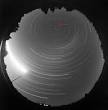
Earth-grazing meteoroid passed above Czechoslovakia and Poland |
Earth-grazing meteoroid passed above Czechoslovakia and Poland (astronomy and space ) a 44 kilogram, 41.5 km/s Earth-grazing meteoroid passed above Czechoslovakia and Poland at 97.9 km. It was the first time when calculations of the orbit of such a body based on photographic records from two distant places were made. |
|
30 Nov 1989

Human Genome Project |
Human Genome Project (biology and medicine) The Human Genome Project is founded. |
|
30 Nov 1989
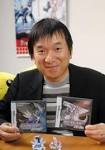
Satoshi Tajiri |
Satoshi Tajiri (computer science) Satoshi Tajiri begins creating the first Pokémon game. |
|
30 Nov 1989

Thomas W. Laqueur |
Thomas W. Laqueur (history of science) Thomas W. Laqueur publishes Making Sex: Body and Gender From the Greeks to Freud (Harvard University Press). |
|
30 Nov 1989

Victor Kolyvagin |
Victor Kolyvagin (mathematics) Victor Kolyvagin introduces Euler systems. |
|
30 Nov 1989
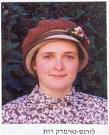
Ruth Lawrence |
Ruth Lawrence (mathematics) Ruth Lawrence publishes a paper on homological representations of the Hecke algebra, introducing, among other things, certain novel linear representations of the braid group, the Lawrence–Krammer representation. |
|
30 Nov 1989
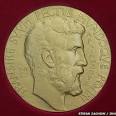
Fields Prize in Mathematics |
Fields Prize in Mathematics (awards) Fields Prize in Mathematics: Vladimir Drinfeld, Vaughan Frederick Randal Jones, Shigefumi Mori and Edward Witten |
|
30 Nov 1989

Turing Award |
Turing Award (awards) Turing Award – Fernando J. Corbató |
|
04 Jan 1990
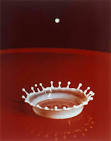
Doc Edgerton |
death Doc Edgerton Prof. Doc Edgerton, (b. 1903), American electrical engineer. |
|
14 Jan 1990

Rosalind Pitt-Rivers |
death Rosalind Pitt-Rivers Rosalind Pitt-Rivers (b. 1907), English biochemist. |
|
26 Jan 1990

Lewis Mumford |
death Lewis Mumford Lewis Mumford (b. 1895), American historian and philosopher of science. |
|
01 Feb 1990

Adobe Photoshop |
Adobe Photoshop (computer science) Adobe Photoshop 1.0 graphics software, devised by Thomas Knoll, is released. |
|
13 Mar 1990

Bruno Bettelheim |
death Bruno Bettelheim Died 13 Mar 1990 at age 86 (born 28 Aug 1903). Austrian-American psychologist known for his work in treating and educating emotionally disturbed children. Bettelheim was a revered author of influential clinical studies on the lives of autistic children as well as popular Freudian interpretations of myth and fairy tale; and founder of the Orthogenic School of psychoanalysis in Chicago. After his suicide, at the age of 86, a scandal followed when his reputation as a benevolent sage was besmirched by former patients who claimed that he had sadistically beaten them. |
|
20 Mar 1990

Victor Rothschild, 3rd Baron Rothschild |
death Victor Rothschild, 3rd Baron Rothschild Victor Rothschild, 3rd Baron Rothschild (b. 1910), English polymath. |
|
22 Mar 1990

Gerald Bull |
death Gerald Bull Gerald Bull (b. 1928), Canadian engineer. |
|
24 Mar 1990
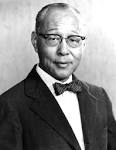
An Wang |
death An Wang An Wang (b. 1920), Chinese American computer designer. |
|
25 Apr 1990
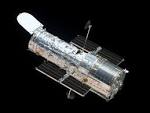
Hubble Space Telescope |
Hubble Space Telescope In 1990, the $2.5 billion Hubble Space Telescope was deployed in space from the Space Shuttle Discovery into an orbit 381 miles above Earth. It was the first major orbiting observatory, named in honour of American astronomer, Edwin Powell Hubble. It was seven years behind schedule and nearly $2 billion over budget. In orbit, the 94.5-in primary mirror was found to be flawed, giving blurred images and reduced ability to see distant stars. However, correcting optics were successfully installed in 25 Dec 1993. The telescope 43-ft x 14-ft telescope now provides images with a clarity otherwise impossible due to the effect of the earth's atmosphere. Instrument packages capture across the electromagnetic spectrum. |
|
22 Jun 1990

Ilya Mikhaylovich Frank |
death Ilya Mikhaylovich Frank Died 22 Jun 1990 at age 81 (born 23 Oct 1908). Russian physicist who, with Igor Y. Tamm, theoretically explained the mechanism of Cherenkov radiation. In 1934, Cherenkov discovered that a peculiar blue light is emitted by charged particles traveling at very high speeds through water. Frank and Tamm provided the theoretical explanation of this effect, which occurs when the particles travel through an optically transparent medium at speeds greater than the speed of light in that medium. This discovery resulted in the development of new methods for detecting and measuring the velocity of high-speed particles and became of great importance for research in nuclear physics. For this, Frank received the Nobel Prize for Physics in 1958 (jointly with Pavel A. Cherenkov and Igor Y. Tamm). |
|
18 Jul 1990
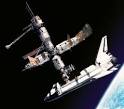
Mir |
Mir In 1990, the airlock hatch on the Soviet space station Mir could not be closed by the cosmonauts returning after a seven-hour space walk making an exterior inspection and repairs. The hatch had been damaged when it was pushed back on its hinges by residual air escaping when the cover was opened to begin the spacewalk. Instead, Anatoly Solovyov and Aleksandr Balandin stayed behind an interior airlock in another part of the station for eight days. After their next spacewalk to continue repairs on 26 Jul, they managed to secure the hatch and repressurize as normal. |
|
18 Jul 1990
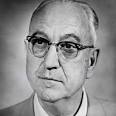
Karl Augustus Menninger |
death Karl Augustus Menninger Died 18 Jul 1990 at age 96 (born 22 Jul 1893). American physician, who with his father, Charles Frederick Menninger and younger brother, pioneered methods of psychiatric treatment in the 20th century. In group practice, they established facilities that linked two concepts: the psychoanalytic understanding of behaviour as applied to the treatment of hospitalized patients, and the use of the social environment of the hospital as an adjunct to therapy. In 1941, To fulfill their goal to combine medical practice, research, and education, the family formed the Menninger Foundation in 1941 and four years later the Menninger School of Psychiatry. The foundation has been extensively involved in psychiatric education, training, and research. |
|
10 Aug 1990

Magellan orbits Venus |
Magellan orbits Venus In 1990, the space probe Magellan arrived at its planned polar orbit around Venus. As the planet rotated slowly beneath it, Magellan circled once every 3-hr 15-min, collecting radar images of the surface in strips about 17-28 km (10-17 mi) wide and radioed back the information. Magellan was carried into space in the shuttle cargo bay of STS-30 Atlantis, launched 4 May 1989, and was the first planetary spacecraft to be released from a shuttle in Earth orbit. The Magellan mission also provided gravity, atmospheric and other measurements. On 11 Oct 1994, it was directed towards the surface, collecting data until it broke up and partially vaporized in the atmosphere. |
|
12 Aug 1990
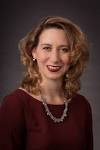
Sue |
Sue (paleontology) "Sue", the best preserved Tyrannosaurus rex specimen ever found, is discovered in South Dakota. |
|
24 Aug 1990

Harold Masursky |
death Harold Masursky Died 24 Aug 1990 at age 66 (born 23 Dec 1923). American geologist and senior scientist at the U.S. Geological Survey's astrogeology branch supporting space exploration. Starting in the mid 1960s, he helped analyze the photographs from the Ranger, Lunar Orbiter, and Surveyor lunar missions. In mapping the moon, suitable landing spots were being sought for the unmanned Surveyor 5 spacecraft (1967) and the manned Apollo landings (1969-72). Masursky headed the group that interpreted television transmissions from Martian satellite Mariner 9 (1971), producing maps to plan the landing of unmanned Viking spacecraft on Mars (1976). He analyzed data on the geological origins and evolution of the planets. He collaborated in foreign projects such as the Soviet Venus probes. |
|
09 Oct 1990

Murray Bowen |
death Murray Bowen Murray Bowen (b. 1913), American psychiatrist and pioneer of family therapy. |
|
17 Oct 1990
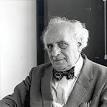
Hans Freudenthal |
death Hans Freudenthal Hans Freudenthal (b. 1905), Dutch mathematician. |
|
12 Nov 1990
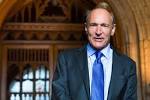
Tim Berners-Lee |
Tim Berners-Lee (computer science) Tim Berners-Lee publishes a more formal proposal for the World Wide Web. |
|
13 Nov 1990

web |
web (computer science) The first known web page is written. |
|
19 Nov 1990
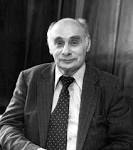
Georgy Nikolaevich Flerov |
death Georgy Nikolaevich Flerov Died 19 Nov 1990 at age 77 (born 2 Mar 1913). Soviet physicist who, in 1941, recognized that uranium undergoes spontaneous fission (needing no neutron bombardment). He was one of the early Russian investigators of nuclear fission. In early 1942 , Flerov noticed that articles on nuclear fission were no longer appearing in western journals. Recognizing the implication that such research had become secret, he wrote to Premier Joseph Stalin, insisting that "we must build the uranium bomb without delay," (subsequently led by Igor V. Kurchatov.) In later research, Flerov announced synthesis of isotopes of element 104 (1965) and 106 (1974). Co-discoveries were made in the U.S. Several names were suggested. Eventually the adopted names were rutherfordium and seaborgium. |
|
25 Dec 1990

Vladimir Vladimirovich Belousov |
death Vladimir Vladimirovich Belousov Died 25 Dec 1990 at age 83 (born 17 Oct 1907). Soviet geologist and geophysicist whose theory of density differentiation (1942) held that movements of the Earth's surface is a result of gradual internal structural changes as denser matter sinks towards the Earth's centre. He visualized continents remaining more or less in place, affected only by vertical motion (though his description of the forces involved was poorly formed.) His position as a prominent scientist was influential in sustaining this concept. Until the late 60's, Soviet scientists delayed accepting newer ideas of plate tectonics. Belousov maintained a belief that vertical movements of continental land masses could not be correctly explained by the plate tectonics theory advanced in the West. |